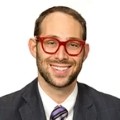
The convergence of current psychedelics regulatory pathways may bring benefits and new challenges.
There is a passage in Michael Cunningham’s The Hours that I have always loved, heartbreaking as it is, when Clarissa Vaughan observes: “I remember one morning getting up at dawn, there was such a sense of possibility. You know, that feeling? And I remember thinking to myself: So, this is the beginning of happiness. This is where it starts. And of course there will always be more. It never occurred to me it wasn’t the beginning. It was happiness. It was the moment. Right then.”
I am beginning to wonder if the same might be said about the current regulatory moment for psychedelics. I do not mean to suggest that the current moment is a happy one, or, more precisely, that it is one of unadulterated happiness. Pressing questions about how to regulate psychedelics remain unanswered. For example, there are still concerns about how best to manage intellectual property being claimed in the space, which will exclude competitors and lead to higher prices. There have also been allegations of sexual abuse, including the exploitation of a patient undergoing psychedelic assistant therapy during clinical trials. There are also concerns about the failure to meaningfully acknowledge Indigenous history and tradition as to spirit medicines or engage in benefit sharing, and a failure to include Indigenous communities in governance.
In spite of these concerns, the current moment is one where there is, in Cunningham’s words, “such a sense of possibility.” In the last few years, we have seen not one but several regulatory models as to how people and psychedelics might intersect with society in the United States. I find it useful to divide them into three major pathways.
First, there is a religious pathway, fostered by the Religious Freedom Restoration Act, that has allowed a very small number of churches to incorporate psychedelics, especially ayahuasca, into their religious life—albeit typically only after hard-fought battles with the U.S. Drug Enforcement Administration.
Second, there is a U.S. Food and Drug Administration (FDA)-approved medical pathway that is likely to open up for MDMA as treatment for post-traumatic stress disorder (PTSD) and perhaps thereafter psilocybin as treatment for major depressive disorder.
Finally, there is a pathway that is sometimes referred to as “recreational,” but that wording is underinclusive and, in some instances, pejorative. Although some people who access psychedelics this way might understand their usage as recreational, there are others who seek enlightenment, a spiritual experience outside of organized religion, assistance to live better outside of a psychiatric or a psychological diagnostic paradigm, or something else entirely.
But as my frequent coauthor, Mason Mark, has argued, even within this third pathway, branching regulatory models across state and local initiatives have appeared in the last several years. One such branch is decriminalization, in which initiatives frequently involve reducing possession of small amounts to a civil penalty with a fine or deprioritizing enforcement of criminal laws.
Another branch involves supported adult use models. One such model is the Oregon Psilocybin Services Act, which remains agnostic about the purpose of consumption but requires a trained and licensed facilitator to administer psilocybin. Draft rules in Colorado support a facilitated use model, although in a somewhat different configuration.
Each of the three main larger pathways exists very much in its own culture, involving differences in both purpose and self-understanding of purpose sought by users, communitarian versus individualist orientations, and ways of knowing. For instance, the medical pathway determines whether psychedelics are “working” by looking at the results of a randomized clinical trial, but the religious pathway asks whether users are experiencing the imminence of God or connectedness with nature, for example.
The availability of these divergent pathways are, to my mind, a wonderful thing because they meet very different needs. For one person, taking psychedelics might be like the prescribing of anti-depressants or anti-psychotics by a medical specialist for a diagnosed mental health condition. But for another, taking psychedelics is a way of consuming spirit medicine to connect with their Indigenous heritage or a form of syncretic Catholic worship. For still another, it is a way of spending a Saturday evening connecting with a loved one while gazing at the stars.
But when it comes to regulatory pathways, I am less confident that these pathways can coexist in the long-term, or at least that they can coexist in their current forms. In particular, I believe the likely FDA approval of MDMA or psilocybin is likely to put pressure on the third, non-medical and non-religious pathway. We have thus far seen unlikely political bedfellows in the move to expand access to psychedelics, including pharmaceutical companies, mental health advocates, military veterans and active duty service members, silicon valley investors, libertarians, and what some might call “old-school hippies.” This kind of coalition has helped paved the way for multi-faceted regulatory experimentation.
In a world in which an FDA-approved drug is available, however, there may be less political support for decriminalization of non-medical uses. This presidential election year, we have already seen general pushback and even rollbacks of decriminalization initiatives, and we could see the fracturing of the current coalition politics. There may also be less interest in ensuring facilitator pathways for supported adult use outside of the prescription medical system. So-called diversion of “medical” psychedelics into the nonmedical space may be viewed as a problem for federal, state, or local law enforcement and lead to increased policing of these approaches.
On the flipside, diversion may also kill the market for the facilitator services we are seeing in Oregon, given that facilitator services tend to be expensive to deliver as compared to buying pills on a secondary market. Indeed, apart from diversion, if the medical pathway is covered by health insurance but the facilitator pathway is not, that may doom the facilitator pathway.
To echo the famous political film phrase in predicting the future of regulation, we must “follow the money.” The companies developing patented psychedelic therapeutics for prescription have a vested interested in ensuring that the medical pathway thrives. The comparative cost to consumers of access in various pathways is intimately related to a current vociferous debate as to whether the medical pathway will require only “psychological support” to use psychedelics or instead deep integration into psychotherapy. The choice will affect how the cost curve of the medical and non-medical routes stack up.
This debate is also related to questions faced by Oregon and Colorado on how to separate medical and non-medical pathways—for example, whether to keep the role of health care provider and facilitator separate, whether to separate medical from non-medical claims about possible benefits, and even whether both kinds of services should be provided in the same physical space and, if not, what kind of separation is sufficient.
All of this is also highly relevant to questions of liability and licensure. Should facilitators without a medical degree receive the benefit of medical malpractice rules based on custom in the field or should they be governed by the ordinary law of negligence? How will liability insurers handle facilitated versus medical use of psilocybin? And how will divergent licensure regimes handle complaints of inappropriate sexual behavior? One can very much see the attraction for the regulator of the convergence in rather than divergence of regulatory pathways.
Let us assume I am right that we may currently be at the high point of policy experimentation given the availability of many divergent pathways for regulating psychedelic use. Will we look at the current moment as one of wonderful possibility that eventually closed to a fixed point or instead as a noisy, cacophonous policy space that had its use but ultimately leveled out to a single approach? I think the answers will be very different for different players in the psychedelic political space, but there will inevitably be winners and losers.
This work was supported by the Project on Psychedelics Law and Regulation (POPLAR) at the Petrie-Flom Center for Health Law Policy, Biotechnology, and Bioethics at Harvard Law School, which itself received funding from the Saisei Foundation, a nonprofit organization and by the Gracias Family Psychedelics Research Initiative and Bootcamp in Ethics Regulation Fund at Harvard Law School.
This essay is part of a six-part series entitled, Global Perspectives on Psychedelics Regulation.




